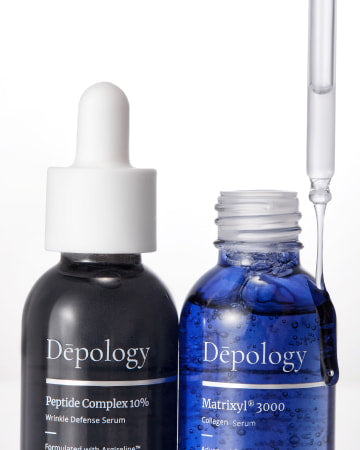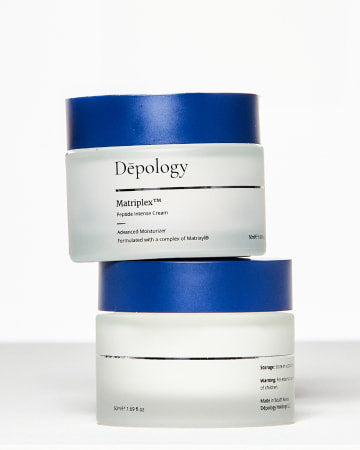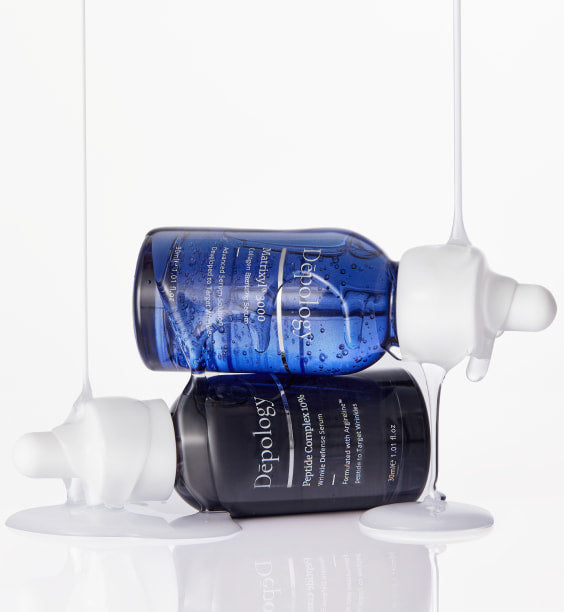
Can You Use Azelaic Acid With?: Ultimate Guide
When it comes to skin care, a lot of people are looking for the perfect solution that can cure their acne, reduce hyperpigmentation, and even help them achieve overall skin rejuvenation.
One ingredient that has been getting a lot of attention lately is azelaic acid. With its ability to address all of these concerns in one go, it's easy to see why this ingredient is so popular.
With the rising trend of layering skincare ingredients for maximum efficacy, a question arises: "How well does Azelaic acid play with other active ingredients?"
Just because something sounds too good to be true doesn't mean it actually is! So before you run off and start using every product with azelaic acid on the label, let's take a look at what it does for your skin and how it works with other ingredients.
WHAT IS AZELAIC ACID
**Azelaic acid** is a naturally occurring dicarboxylic acid found in grains such as barley, wheat, and rye. While it's naturally sourced, the Azelaic acid used in skincare products is typically lab-engineered to ensure its purity and stability.
What does Azelaic Acid do?
Azelaic acid works by targeting the cells in the skin that cause inflammation, reducing redness and swelling. It also **exfoliates** the skin, helping to unclog pores and reduce acne breakouts. This acid also **inhibits melanin production**, making it useful in treating hyperpigmentation.
How Does It Work?
-
**Anti-Inflammatory:** Azelaic acid has strong anti-inflammatory properties, which can help reduce redness and inflammation, especially from conditions like **acne** and **rosacea**.
-
**Antibacterial:** It possesses antibacterial traits that target the bacteria responsible for acne breakouts, making it effective in acne treatment routines.
-
**Exfoliating:** Azelaic acid works to exfoliate the skin by promoting faster cell turnover, leading to a smoother skin texture and unclogged pores.
-
**Hyperpigmentation:** It **inhibits melanin production**, which can help in fading dark spots, melasma, and other forms of hyperpigmentation.
BENEFITS OF AZELAIC ACID IN SKINCARE:
-
**Treats Acne:** By targeting the root causes – bacteria, inflammation, and clogged pores – Azelaic acid can be a comprehensive solution for acne-prone skin.
-
**Reduces Rosacea:** Its anti-inflammatory properties make it suitable for treating redness and inflammation associated with rosacea.
-
**Evens Skin Tone:** Azelaic acid can fade dark spots and hyperpigmentation, resulting in a more even skin tone.
-
**Improves Skin Texture:** With its exfoliating properties, it can lead to smoother skin and fewer blemishes.
Azelaic acid is available in various forms, including serum sticks, gels, foams, creams, and serums. The concentration in over-the-counter products typically ranges from 10% to 20%.
-
After your skincare routine, gently glide the serum stick onto areas of redness on your skin.
-
Keep it handy throughout the day for a refreshing boost, even over makeup.
-
Reapply as needed for continuous relief and comfort.
WHAT ARE THE SIDE EFFECTS OF AZELAIC ACID?
Azelaic acid is a dicarboxylic acid that is largely utilised for its anti-inflammatory qualities, which can be helpful in treating disorders like rosacea and acne. Some people can develop negative reactions, as is the case with many skincare active ingredients. When used in skincare products, azelaic acid has the following most often reported negative effects:
-
**Skin Irritation:** One of the most common side effects, especially when first introduced to the product, is skin irritation. This can manifest as **redness, burning, or a stinging sensation**.
-
**Dryness and Peeling:** Azelaic acid may cause the skin to become dry or start to peel, especially if used in conjunction with other strong actives or if applied too frequently.
-
**Itchiness:** Some users might experience itchiness after applying products containing azelaic acid.
-
**Mild Tingling:** Upon application, there might be a mild tingling sensation. This is usually temporary and might lessen with continued use as the skin becomes more accustomed to the ingredient.
-
**Erythema (Redness):** Particularly in sensitive individuals or if applied in large amounts, azelaic acid can lead to erythema or skin redness.
-
**Hypopigmentation:** In rare cases, particularly with prolonged use, azelaic acid might lighten the skin beyond the targeted hyperpigmented areas. This side effect is infrequent but worth noting.
-
**Patch Test:** Always perform a patch test when introducing new skincare products to ensure you don't have an adverse reaction.
-
**Start Slowly:** When first using azelaic acid, begin with a lower concentration and gradually work your way up as your skin builds tolerance. Similarly, consider using it every other day or even less frequently to start.
-
**Moisturize:** Counteract potential dryness by following up with a hydrating moisturizer. This can also help to create a barrier and reduce potential irritation.
-
**Avoid Mixing with Other Strong Actives:** If you're new to azelaic acid, it might be best to avoid using it simultaneously with other potent actives like retinoids or strong exfoliants. Once your skin becomes more accustomed, you can slowly introduce other actives.
-
**Follow Instructions:** Ensure you're using the product as directed, paying attention to the recommended amount and frequency.
-
**Consult a Dermatologist:** If you're unsure about incorporating azelaic acid into your skincare routine or if you experience prolonged side effects, it's a good idea to consult with a dermatologist.
CAN YOU USE AZELAIC ACID WITH...?
Azelaic acid is a naturally occurring ingredient that's been shown to have numerous skincare benefits. It's an effective blemish-fighter, brightener and anti-ager, and it can even help lighten hyperpigmentation.
But what about combining azelaic acid with other ingredients? Can you use it with retinol? Will it clash with niacinamide? Is there any reason to avoid using azelaic acid with vitamin C or hyaluronic acid?
We're here to answer all your azelaic acid compatibility questions — and more!
### Can you use Azelaic Acid with Matrixyl?**Azelaic acid and Matrixyl 3000** in the same routine is **not recommended**. It is best to use Azelaic acid and Matrixyl 3000 on separate days of the week. This will ensure that each ingredient has a chance to work its magic without being compromised by the other. **Why?** Azelaic acid is a dicarboxylic acid, which means that it is a relatively strong acid. **Peptides**, on the other hand, are sensitive to acids and can be degraded by them.
When azelaic acid and matrixyl 3000 are used together, there is a risk that the peptide will be damaged and unable to work effectively. This can lead to reduced collagen and a decrease in the anti-aging benefits of matrixyl 3000.
If you want to use azelaic acid and matrixyl 3000 in the same routine, we recommend using azelaic acid in the morning and Matrixyl® 3000 Serum at night. This will help to minimize any potential irritation.
If you have any concerns about using azelaic acid and matrixyl 3000 together, be sure to talk to your dermatologist.
### Can you use Azelaic Acid with Retinol?**Yes**, but it's important to introduce these ingredients slowly so your skin can adjust. When using both products, apply Azelaic acid first and then retinol.
Azelaic acid is a natural antioxidant that has been used for a variety of skin concerns, including acne, sun damage and hyperpigmentation. Retinol is an ingredient found in many anti-aging products that helps reduce the appearance of fine lines and wrinkles.
Begin by applying Azelaic acid every morning before applying any other skincare products or makeup. Wait 20 minutes before applying sunscreen if you plan to be out in the sun during the day. If you're going to be indoors most of the day, you don't need to wait 20 minutes before applying sunscreen — just apply it right away after applying your Azelaic acid solution.
Once your skin has adjusted to using Azelaic acid every morning, you can layer it with retinol at night. Apply a thin layer of your Azelaic acid solution first followed by a thin layer of your retinol product. Wait 20 minutes before applying any other skincare
#### **How to Layer Azelaic Acid in your routine:**-
**Cleanse**: Begin with a clean face by using a gentle cleanser suitable for your skin type.
-
**Toner** (optional): If you incorporate a toner into your routine, apply it after cleansing. Allow it to fully absorb.
-
**Azelaic Acid**: After toning, apply your Azelaic acid product. Since it's lighter than most retinol creams, it should be applied first. Let it sink into the skin and wait for it to dry completely.
-
**Retinol**: Once the Azelaic acid is fully absorbed, you can apply your retinol product. Make sure to use a pea-sized amount and spread it evenly across your face, avoiding the immediate eye area.
-
**Moisturize:** After allowing the retinol to absorb, lock in the active ingredients with a moisturizer suitable for your skin type.
-
**Sunscreen (AM only):** If you're using these products in the morning (though retinol is typically recommended for nighttime use), always finish with a broad-spectrum SPF, as retinol can make your skin more sun-sensitive.
-
**Morning:** While Azelaic acid can be used in the AM, retinol is generally advised for PM use because of its photosensitizing properties. If you must use retinol in the morning, always finish with a high SPF.
-
**Night:** This is the ideal time for retinol application. After your nighttime cleansing, follow the steps mentioned above to layer Azelaic acid and retinol.
For more Information on our Retinol: Retinol: Dos and Don'ts
Can You Use Azelaic Acid and Vitamin C Together?
**Yes**, combining Azelaic acid with Vitamin C can be beneficial.
Vitamin C is a known antioxidant that helps to protect skin from free radicals and other damage caused by environmental stressors. It also has anti-aging properties that help reduce dark spots and pigmentation over time.
Azelaic acid is an ingredient in skin care products that can help with acne, hyperpigmentation and overall acne-prone skin conditions.
The combination of these two ingredients can work together to improve your skin's overall health and even help you achieve clearer skin faster than you would alone!
#### **How to Layer with ****Vitamin C****:-
**Cleanse:** Start with a clean slate by washing your face with a gentle cleanser.
-
**Tone (optional):** If you use a toner, apply it next. Allow it to absorb fully.
-
**Vitamin C Serum:** Vitamin C serums are typically lightweight and should be applied after toning but before heavier serums or creams. Spread a few drops evenly across your face and neck. Allow it to absorb fully, which might take a few minutes.
-
**Azelaic Acid:** After your Vitamin C serum has been fully absorbed, apply your Azelaic acid product. Whether it's a serum, gel, or cream, spread a thin layer over your face, avoiding the eye area.
-
**Moisturize/SPF:** Finish your routine with a moisturizer and, if during the day, a broad-spectrum sunscreen to protect your skin, as both actives work better with sun protection.













